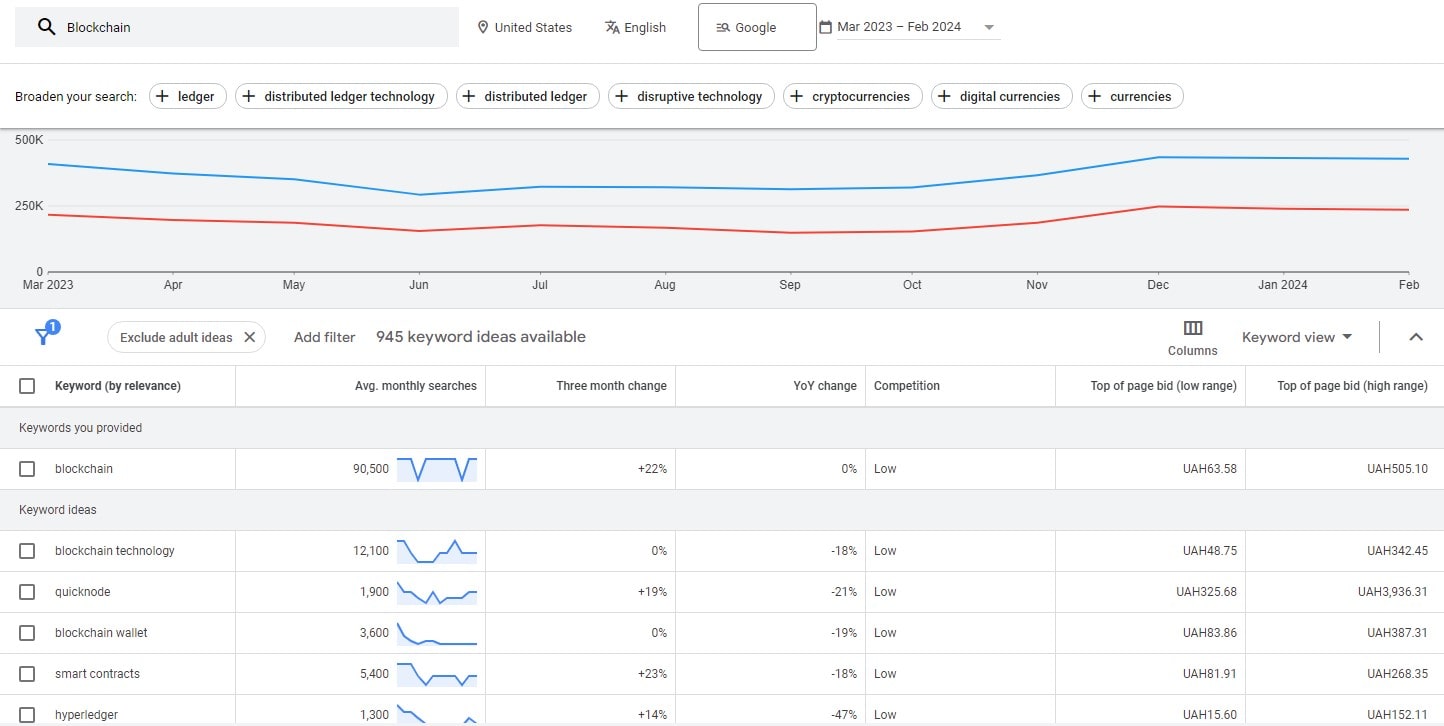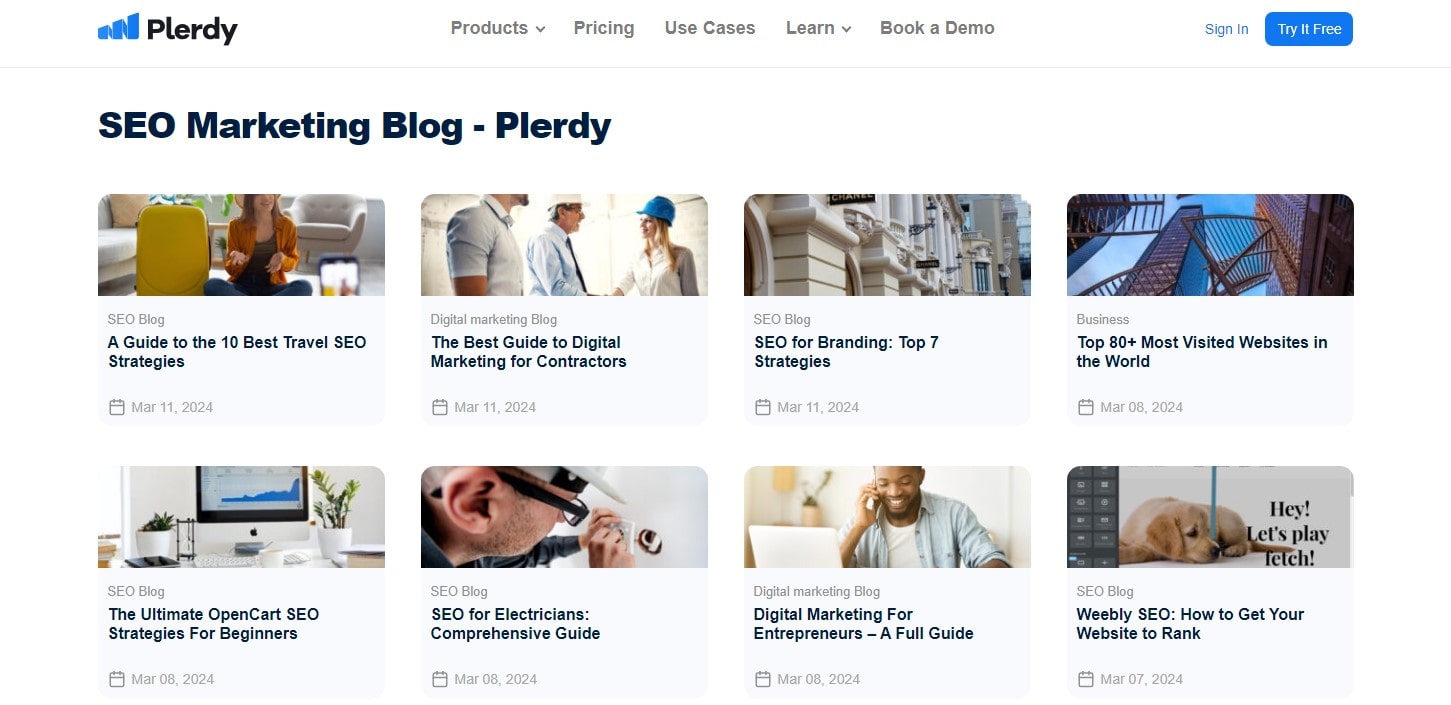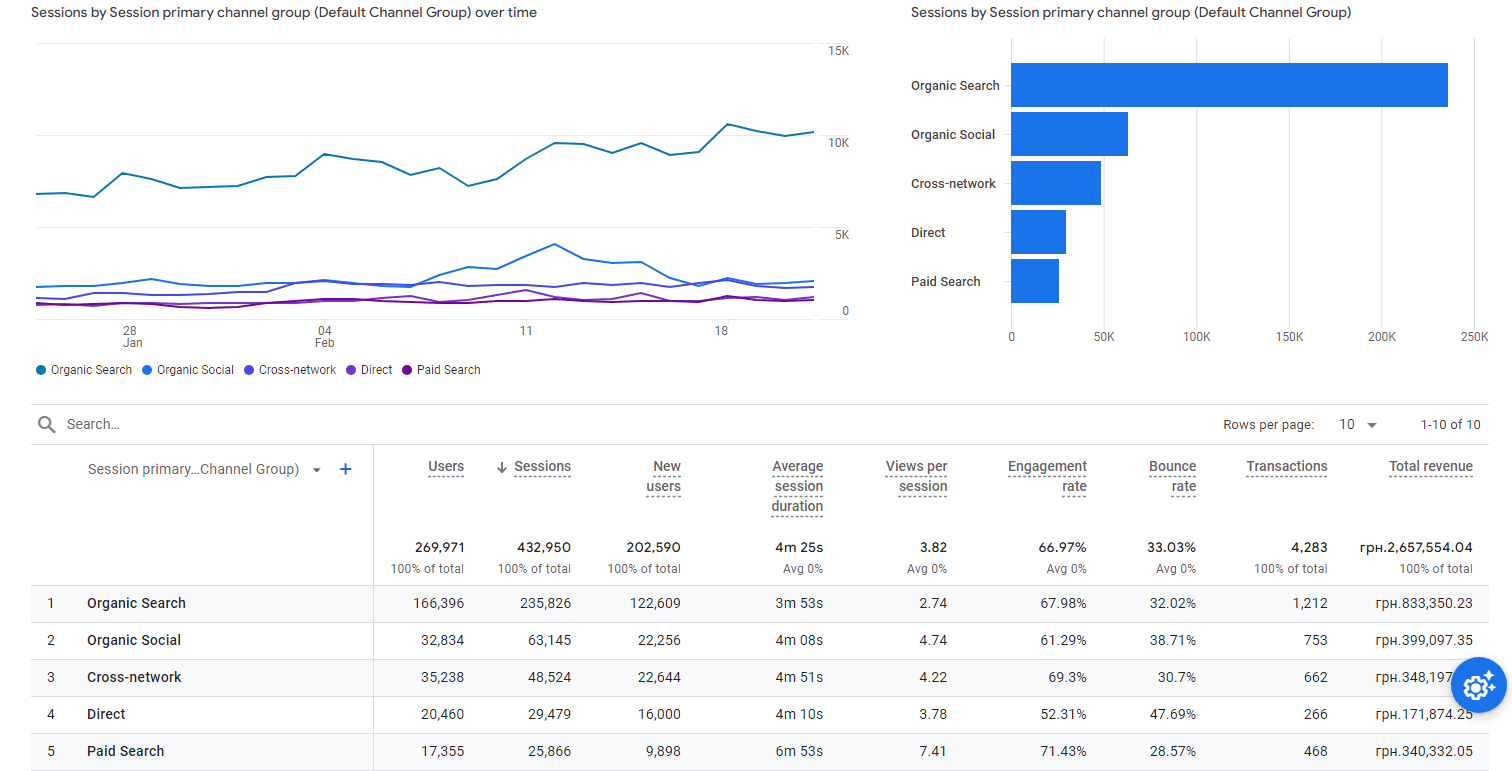Imagine SEO as a pick-up line at an art show; it must be clever, attractive, and memorable to catch attention. That’s exactly what SEO does for your creative work online. It’s the art of making your digital presence irresistible to search engines, much like a masterpiece catches an art lover’s eye. In this fast-paced digital world, where your online portfolio is your gallery, understanding SEO is no longer a luxury, it’s a necessity. At Plerdy, we know the importance of standing out in the digital crowd. Let’s dive into how you can use SEO to bring your creative brand into the spotlight.
Understanding the Basics of SEO

SEO is your digital best friend, despite its complicated tech word. Think of it as the secret sauce that makes your creative content delicious for search engines like Google. Now, let’s unwrap this mystery.
What is SEO?
SEO is the art and science of making your website appealing to search engines. This is a group of methods to boost your website’s SERP ranking. Why does this matter? Because the higher you rank, the more visible you are to potential clients and followers. Simply put, SEO is about being found easily online. If you are not on Google’s first page, few will see you.
Why SEO Matters for Creatives
SEO is a crucial tool for artists, designers, musicians, and other creatives. It’s the digital age’s equivalent of having your art displayed in a prime gallery location. In a world where digital presence is king, good SEO ensures your work gets the audience it deserves. HubSpot found that 75% of searchers never get past the first page. That’s a huge audience you could only benefit from with effective SEO.
Now, diving into SEO basics isn’t just about attracting traffic; it’s about drawing the right kind of traffic – visitors genuinely interested in your offer. Targeting specialty keywords increases your chances of engaging an audience.
Implementing Keywords in Content for Creatives
Keywords are the cornerstone of SEO. They are words or phrases that your target audience uses to search for your type of creative work online. By intelligently adding keywords to your homepage, about page, blog entries, and photo captions, you inform search engines what your site is about. This helps in ranking your site for those specific terms. Google Keyword Planner and SEMrush help find good keywords.
Grasping SEO basics is like learning the first chords of a guitar. It’s the beginning of a journey towards a richer online presence. Remember, good SEO practices evolve, so stay adaptable and keep learning. As a creative, your work deserves to be seen, and mastering SEO is a significant step in ensuring it gets the spotlight it deserves. Check out resources like Moz’s Beginner’s Guide to SEO for deeper dives into SEO strategies.
Identifying Your Creative Niche and Keywords

Finding the perfect keywords for your creative niche is like unlocking a secret door to an exclusive club where all your potential fans and clients are waiting. It’s about getting specific, being relevant, and speaking their language. Let’s explore how to identify your unique niche and the keywords that will open doors to your target audience.
Finding Your Niche
The first step in SEO for creatives is to nail down your niche. Are you a graphic designer specializing in minimalist logos or a musician crafting indie folk tunes? Your niche is your artistic identity – it defines who you are in the vast world of creatives. Knowing your niche helps tailor your SEO strategy to target an audience that resonates with your art. It’s about connecting with those looking for exactly what you offer. Identifying your niche is essential because the more specific you are, the less competition you face, and the more likely you are to rank higher in search results.
Keyword Research Tools for Creatives
After identifying your niche, utilize Google Keyword Planner or Ahrefs to locate keywords your audience uses to find your work. These tools help you understand your potential audience’s language when they’re looking for creative work like yours. They provide search volume and competition-level data and suggest variations of your primary keywords. Use these tools to build a list of targeted keywords that will form the backbone of your SEO strategy.
Implementing Keywords in Content
After creating your keyword list, include it into your website content. This includes your web page titles, headings, body content, image alt-texts, and meta descriptions. But remember, it’s not just about stuffing keywords into your content. They should fit naturally within well-crafted, informative, and engaging text. Create valuable, search engine-optimized content for your audience. This balance is key to attracting visitors and keeping them engaged.
Identifying your creative niche and the right keywords is fundamental to your SEO journey. It’s like setting up your easel in the perfect spot where everyone can see your masterpiece. SEO involves continual work. As trends change and your creative work evolves, so should your SEO strategy. Stay informed, adapt, and refine your keywords to ensure your art continues shining in the digital spotlight.
Optimizing Your Online Portfolio
Your online portfolio is your digital showcase; optimizing it for SEO is like putting up the brightest signboard on your shop. It’s not just about showcasing your work; it’s about making it findable and appealing to your audience and search engines. Let’s explore how to polish your online portfolio for the digital stage.
Website Structure and SEO for Creatives

A well-structured website is like a well-organized art gallery. It guides visitors smoothly from one piece to the next, enhancing their overall experience. Maintain a clean navigation menu, homepage, and pages for each work category on your website. Each page should load quickly and be mobile-responsive, as more people now browse the internet on their smartphones. Google’s Mobile-First Indexing now prioritizes mobile-friendly websites, so having a responsive design is crucial for good SEO. Use clean, semantic HTML to structure your content and ensure your site’s architecture is search-engine friendly.
Optimizing Images and Media for Creatives
Your artwork or creative projects are likely image-heavy. While high-quality images are visually appealing, they can slow down your site. Compress photos without sacrificing quality using Adobe Photoshop or free internet tools like TinyPNG. Use informative file names and alt tags. Alt tags are not only essential for SEO (as they let search engines know what the image is about) but also for accessibility, making your website more inclusive. Embedding videos? Host them on platforms like YouTube or Vimeo and embed them on your site. This practice avoids heavy loading on your site and takes advantage of these platforms’ SEO.
An optimized online portfolio showcases your creativity and makes it effortlessly discoverable. Think of it as curating an exhibition where your audience easily finds exactly what they’re looking for. Regularly update your portfolio, monitor site analytics to understand visitor behavior, and continuously optimize based on those insights. Remember, your online portfolio is a living entity in the digital world. Keep it fresh, fast, and accessible, and watch your audience grow. For more tips on optimizing creative websites, check out resources like Moz’s Guide to SEO.
Leveraging Social Media for SEO

Social media is not just for sharing moments—it can boost your SEO in the digital age. Imagine each social media post as a beacon, guiding your audience to discover your creative work. Let’s uncover how to use social media to boost your SEO effectively.
Social Media Platforms and SEO
SEO benefits vary per social media platform. Instagram and Pinterest are perfect for visual creatives, while Twitter and LinkedIn are ideal for sharing articles and engaging in industry conversations. Ensure your profiles are complete and consistent across platforms, using the same name and branding. This consistency helps with brand recognition and contributes to SEO by creating a unified digital footprint. Regularly update your profiles with fresh content, and use hashtags strategically to increase your discoverability. Hashtags act like SEO keywords on social media, helping your content reach a broader audience.
Effective Linking Strategies for Creatives
Social networking can boost SEO by increasing website visitors. One effective way is to include your website link in your social media bios. This provides a direct pathway for followers to explore more of your work and contributes to your site’s backlink profile, a crucial SEO factor. Always include a link to your website when sharing content, whether it’s a new blog post or portfolio update. This practice drives traffic and helps build a network of internal links, which is crucial for SEO.
Using Hashtags Wisely
Hashtags are the SEO of social media. They categorize your content, making it discoverable to a specific audience. Use niche-related trending hashtags. Avoid overstuffing hashtags; instead, choose them wisely to match your content. Tools like Hashtagify can help you find the most effective hashtags for your posts. Remember, the right hashtags can put your content in front of the right audience, even those who don’t follow you.
Social media, when used strategically, can significantly enhance your SEO efforts. It’s about creating a consistent brand presence, driving traffic to your website, and using hashtags smartly. Regularly engaging with your audience on these platforms also boosts your online presence, making your creative work more visible and accessible. Social media is dynamic; stay adaptable and experiment with new strategies to find what works best for your brand. Explore resources like Hootsuite’s Social Media SEO Guide for more insights on leveraging social media for SEO.
Creating SEO-Friendly Content

Crafting content for your website is like painting a canvas, where each stroke contributes to a bigger picture – your online presence. SEO-friendly content engages readers and search engines, not simply keywords. Let’s explore blending creativity with SEO to make your content stand out.
Blogging for Creatives
Blogging is a fantastic way for creatives to express their thoughts, showcase their work, and incorporate SEO strategies. Start by selecting topics that are interesting to your audience and relevant to your creative niche. Incorporate your targeted keywords naturally within your blog posts, especially in titles, headings, and the first paragraph. But remember, the key is quality content. Engaging, informative, and original content will keep your audience returning for more. Blog posts also provide opportunities for internal linking, strengthening your website’s SEO structure. For a deeper understanding of blogging for SEO, consider exploring resources like Yoast’s SEO Blogging Guide.
Video Content and SEO for Creatives
In the era of digital content, videos are a powerful tool for engaging your audience. For creatives, videos can be a dynamic way to showcase their work or process. When uploading videos to your website or platforms like YouTube, ensure the titles and descriptions contain your targeted keywords. Also, consider adding captions or transcripts, as this text content can be indexed by search engines, enhancing your SEO. Videos keep users on your site longer, telling search engines you have valuable material.
Analyzing and Adjusting Your SEO Strategy

SEO is not a set-it-and-forget-it deal. It’s an ongoing process, akin to a gardener tending to a garden. To ensure your SEO efforts bear fruit, analyzing and adjusting your strategy regularly is crucial. Let’s delve into how to keep your SEO strategy dynamic and effective.
Using Analytics Tools
To effectively analyze your SEO strategy, you need the right tools. Google Analytics is a great starting point. It shows how users find your website, which pages they view, and how long they remain. Keep an eye on metrics like bounce rate, page views, and time on site. These indicators can help you understand user behavior and identify areas for improvement. For instance, a high bounce rate might indicate that your landing pages must be more engaging or well-aligned with the audience’s expectations. Moz’s ‘Beginner’s Guide to SEO’ offers detailed insights into using analytics for SEO.
Interpreting Data and Making Adjustments for Creatives
Once you’ve gathered data, the next step is interpreting it and making informed adjustments. If certain pages have low engagement, consider revamping the content or improving the call-to-action. If some keywords are bringing more traffic than others, consider refocusing your content strategy to capitalize on those terms. Following SEO trends and algorithm adjustments is important, as what worked yesterday may not work tomorrow. Regularly updating your website with relevant content is key to maintaining a strong SEO presence.
Staying Updated with SEO Trends
SEO constantly changes, so staying current is like keeping your finger on the internet. SEO trends can change as swiftly as social media trends, making it crucial to stay ahead. Keeping your SEO knowledge fresh is the key to ensuring your content continues to resonate with both search engines and your audience.
Follow reputable SEO blogs and websites like Search Engine Journal or Moz to stay informed. They provide the latest updates, tips, and insights into the SEO world. Attending webinars and online courses can also be beneficial. These platforms offer valuable information about current best practices and forecast upcoming trends in SEO.
Staying informed about SEO trends is an investment in your digital presence. It helps you adapt your strategies to the changing landscape, ensuring your creative work remains visible and relevant. Remember, in the dynamic world of SEO, being proactive and informed is your ticket to continued online success. Keep learning, keep adapting, and watch your online presence grow.
Conclusion
Embarking on your SEO journey is like setting sail on a vast digital ocean; the right strategies will guide you to your destination. SEO is an ongoing process of learning, applying, and adapting. It’s about understanding your audience, leveraging the right tools, and staying updated with trends. The creative world is dynamic, and so is SEO. To keep your skills sharp and content shining, dive into other insightful articles on Plerdy’s blog. They’re packed with tips and tricks to enhance your online presence further. And if you’re looking for a comprehensive tool to track and improve your website’s performance, Plerdy is here to help. Set sail confidently, knowing you have the tools and knowledge to navigate the SEO seas.
